(Updated at 4:45 p.m.) Local elected officials, including Rep. Gerry Connolly, gathered in Lorton on Wednesday to celebrate the introduction of 42 new electric buses to the division’s fleet.
These buses, which were funded by a $16.5 million federal grant announced in January, join the 18 electric buses already in operation. Although the division currently operates over 1,600 diesel buses, county officials emphasized that these new electric buses mark the start of a larger transition.
“I know that this downpayment is the beginning of something much larger, and that’s going to take many years for us to complete,” School Board Chair Karl Frisch told the crowd of attendees at Lorton Station Elementary School on Wednesday.
“But I’m confident with our continued activism by our students, their parents, our Moms Clean Air Force and our school board colleagues and our friends at the state and federal level that we can get there because we absolutely have to,” he continued.
FCPS has pledged to provide entirely carbon-neutral student transportation by 2035. So far, the division has reduced 38% of its greenhouse gas emissions from 2008, according to the 2022 FCPS Greenhouse Gas Inventory Report.
In January 2021, the division received its first electric school bus as part of a Dominion Energy-led initiative aiming to replace all diesel school buses in Virginia by 2030. However, the Virginia House of Delegates rejected the expansion of this program, opting instead to create a grant fund.
In March, VDOT announced it had allocated $11.3 million in federal funding to assist the statewide construction of electric vehicle charging stations.
FCPS received eight electric buses from Dominion in 2021 and secured a state grant for 10 additional buses through a settlement with Volkswagen, which had been sued for emissions test cheating in 2016.
The new federal grant funds come from the Bipartisan Infrastructure Law, signed by President Joe Biden in 2021. The grant, administered through the EPA’s Clean School Bus Program, allocates $5 billion to the Clean School Bus program which is dedicated to replacing existing school buses with zero-emission and low-emission models.
“Every day throughout the United States we’re transporting 10s of millions of students on buses, and many of those buses are anything but clean,” Connolly said during the event.
“Here in Fairfax we’ve got 1,600 school buses, and today’s a great down payment toward a movement for replacing every one of them and making sure our kids are safe and in a healthy environment but also in a vehicle that is not contributing to the environmental problem,” he added.
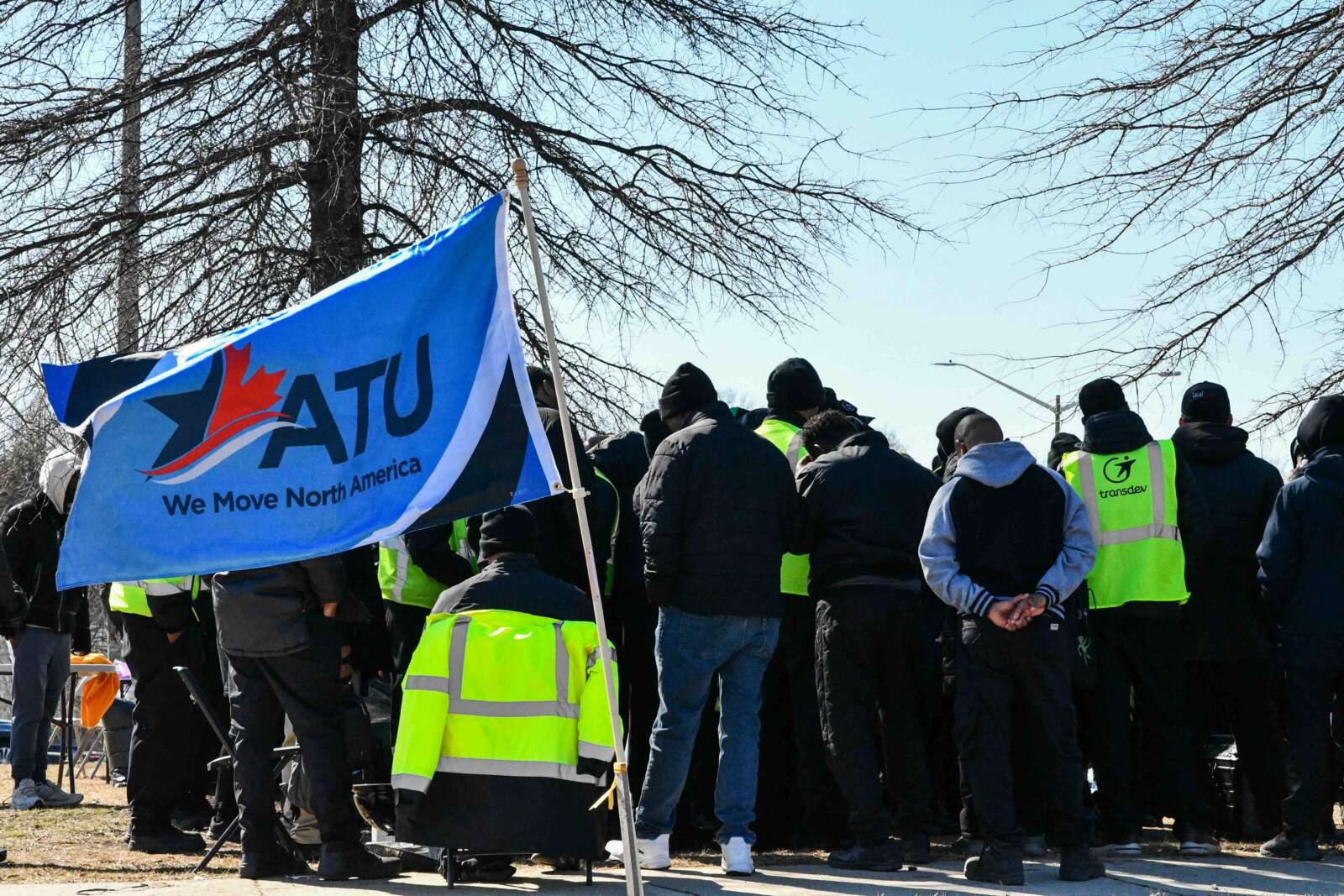
Updated at 9:45 p.m. on 3/6/2024 — Fairfax Connector workers with ATU Local 689 voted today (Wednesday) to ratify a new contract with bus operator Transdev, ending a 15-day strike, the union announced.
The bus system will officially resume service on Friday (March 8), according to Transdev and the Fairfax County Department of Transportation.
“Our management teams and staff have been preparing to restore full bus service as soon as possible after approval of the new contract,” FCDOT said. “We appreciate the patience and understanding of our passengers during this challenging time and look forward to welcoming them back on board.”
Earlier: An end to the strike that has kept Fairfax Connector buses on ice for nearly two weeks may be near.
ATU Local 689, the union representing more than 600 bus drivers and mechanics who run Fairfax County’s public bus service, have reached a “tentative” contract agreement with Transdev, the contractor that operates the service, the union announced tonight (Tuesday).
The news came just two hours after the Fairfax County Department of Transportation announced at 6 p.m. that service would be suspended tomorrow (Wednesday) for a 14th consecutive day.
According to an ATU spokesperson, the strike remains in effect, but union members won’t be picketing. Instead, they will vote on whether to ratify the new contract, which will set standards for pay, benefits and working conditions and replace one that expired on Nov. 30.
“If it passes, they could return to work as soon as Thursday,” ATU Local 689 spokesperson Ben Lynn said.
Fairfax Connector workers have been striking since Feb. 22, when the union called for a work stoppage, saying it remained far apart from Trandev in what they were seeking from a new contract, even after 12 bargaining sessions.
While details of the potential agreement aren’t currently available, Local 689 says it secured “major transformative improvements…that would guarantee retirement security for members, include competitive wages for bus operators and mechanics, and enhance the 40-hour guarantee,” among other priorities.
Transdev confirmed that it had reached “a mutually agreeable, tentative agreement.”
“The next step will be for the ATU 689 membership to vote on ratifying the contract tomorrow,” a Transdev spokesperson said. “We will immediately prioritize restoring full service as soon as possible.”
Fairfax Connector service has been suspended throughout the strike, disrupting travel for the approximately 26,000 passengers who ride its buses daily.
FCDOT encouraged riders to utilize alternatives such as teleworking, carpooling, walking, bicycling, Metro and Virginia Railway Express (VRE), though many commuters resorted to ride-sharing services. Starting last Friday (March 1 ), the county offered free Capital Bikeshare rides.
Fairfax County Board of Supervisors Chairman Jeff McKay said in a newsletter that participants in the Transit Ridership Incentive Program (TRIP), which provides half-price fares to low-income riders, got “a supplemental one-time credit in their accounts that they can use for alternative transportation during the strike.”
Though initially criticized by the union for not taking a more vocal stance on the contract dispute, McKay got involved last week when he sent a letter to a federal mediator on Feb. 28, asking her to move up talks between Transdev and ATU that previously weren’t scheduled to resume until March 5.
In a statement, McKay said county leaders are “pleased” by the news of a tentative agreement, signaling that Fairfax Connector service could resume soon.
“The mutually agreeable solution that resulted from this effort not only respects the exemplary work of the system’s drivers and mechanics but ensures that we are moving forward in a fiscally responsible and sustainable manner that benefits our residents,” McKay said.
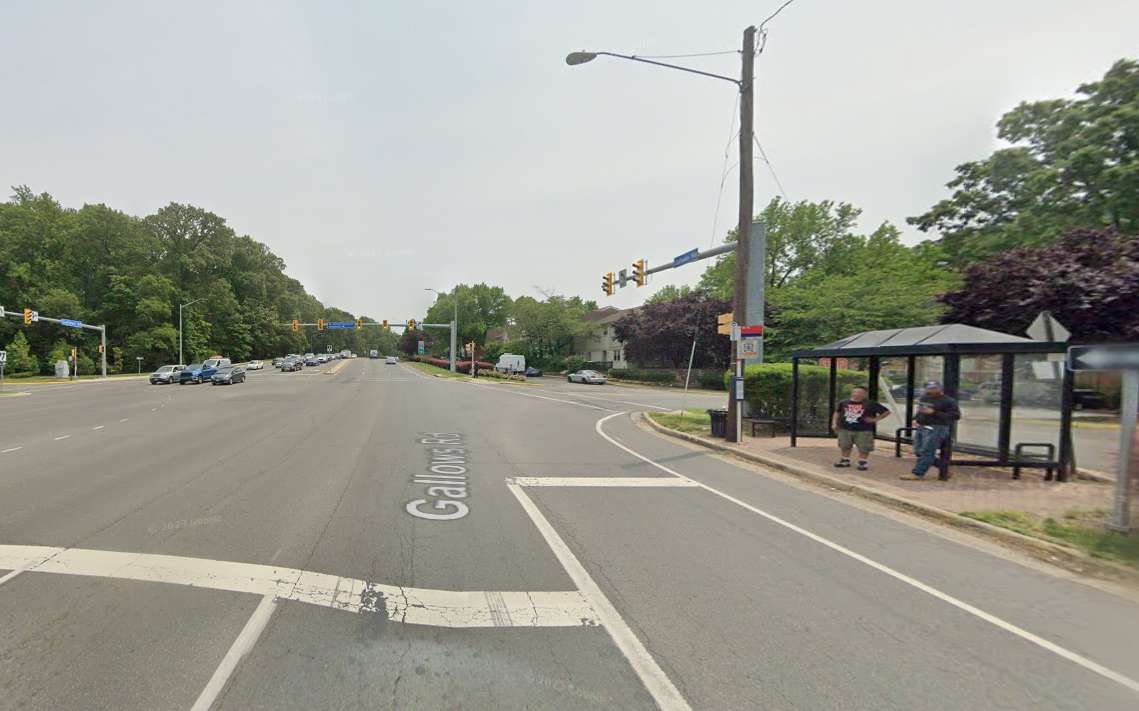
(Updated at 11:20 a.m.) A boy was taken to the hospital yesterday (Sunday) after a crash near Inova Fairfax Hospital.
The Fairfax County Police Department reported at 6:32 p.m. that officers were on scene of a crash involving a sedan and a bus on Gallows Road at Anderson Road in Merrifield.
A passenger in the sedan, the boy was hospitalized with injuries initially considered life-threatening. His condition is no longer believed to be critical.
“The juvenile remains hospitalized, and his condition has been upgraded to non-life-threatening injuries,” the FCPD said this morning (Monday).
According to police, the bus in the crash was a Metrobus.
“There were passengers on the bus but there were no reported injuries to passengers on the Metrobus,” an FCPD spokesperson said.
A spokesperson for the Washington Metropolitan Area Transit Authority suggested FFXnow reach out to the FCPD when contacted for comment, noting that the police department is the lead in traffic investigations.
One lane of Gallows Road was closed last night while Crash Reconstruction Unit detectives investigated, but it reopened around 9:18 p.m.
Officers are on scene of a two-vehicle crash involving a bus and a sedan at Gallows Rd & Anderson Dr in Merrifield. A juvenile occupant in the sedan was taken to hospital w/injuries considered life threatening. (1/2) pic.twitter.com/knTR2v1biO
— Fairfax County Police (@FairfaxCountyPD) March 3, 2024
Image via Google Maps
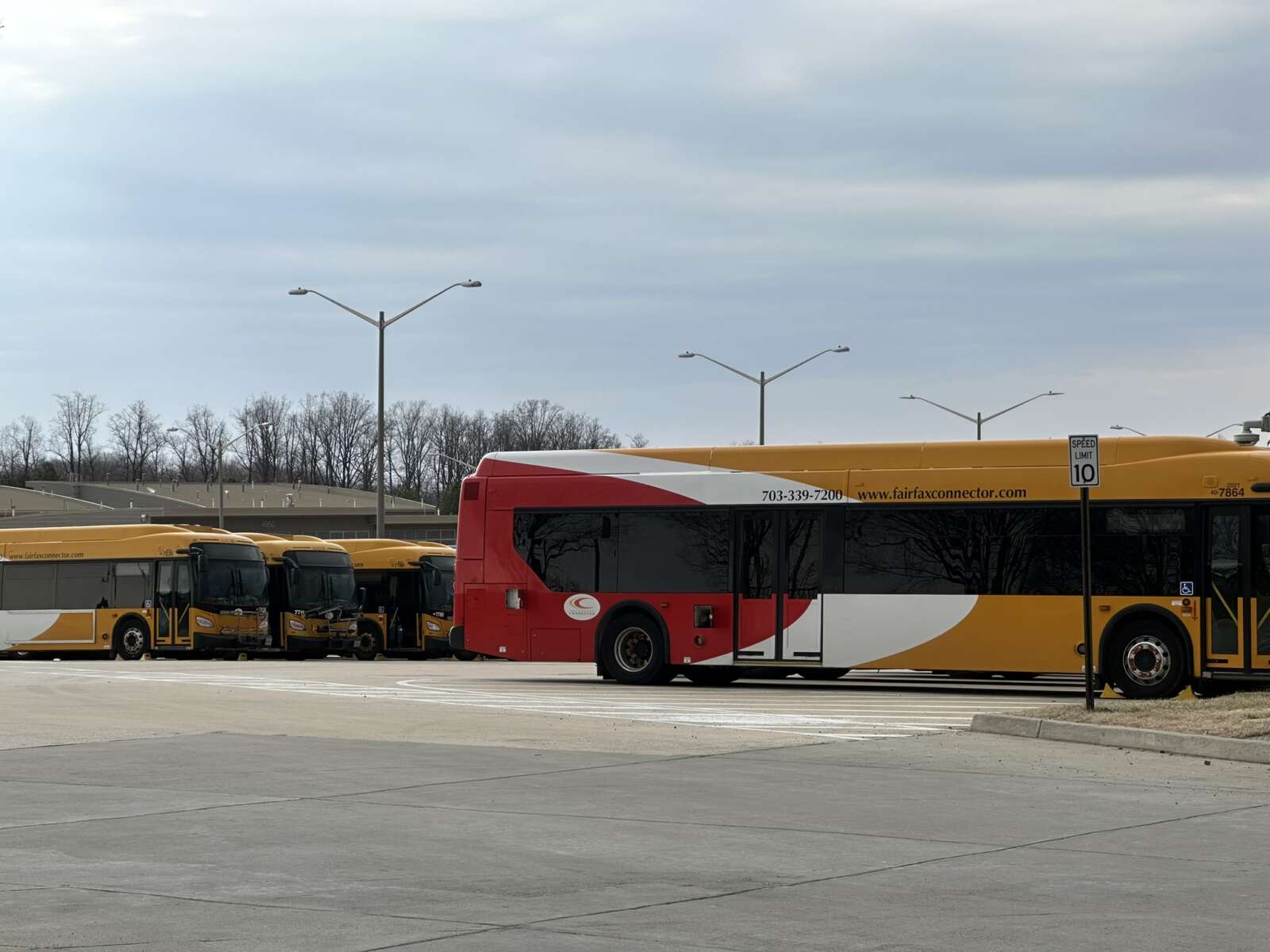
(Updated at 10:30 a.m.) Fairfax Connector is now in its sixth consecutive day without service, as workers continue their strike for better pay, benefits and working conditions.
More than 600 bus drivers and mechanics ceased working last Thursday (Feb. 22) when their union — Amalgamated Transit Union (ATU) Local 689 — called for a strike after months of negotiations with Transdev, the private company that operates Fairfax Connector, for a new labor contract to replace one that expired on Nov. 30.
In a press release, the union said yesterday (Monday) that it met with Transdev but didn’t reach an agreement, stating that the company “failed to offer an acceptable deal,” particularly when it comes to retirement contributions.
The Fairfax County Department of Transportation has said Northern Virginia’s largest public bus system can’t resume service until the strike ends, forcing the Connector’s approximately 26,000 daily riders to find alternate travel options. The county has suggested teleworking, carpooling, walking, bicycling or using other transit, such as Metro and Virginia Railway Express (VRE).
County data indicates that most commuters drive to work, as public transportation usage fell during the COVID-19 pandemic, from 10% in 2019 to 5% in 2022. However, Fairfax Connector’s ridership appears to have bounced back last year, exceeding 2019 levels with 774,875 passengers as of June, according to the Northern Virginia Regional Commission’s transit data dashboard.
In addition to workers, the Connector provides a crucial travel option for many students, who can get a free pass if they’re in middle or high school that can also be used for Fairfax City’s CUE bus and, for select schools, Metrobus.
According to ATU Local 689, the next bargaining session isn’t scheduled until March 5, when federal mediators are expected to attend. This strike has already surpassed the last Connector work stoppage, which lasted four days in 2019.
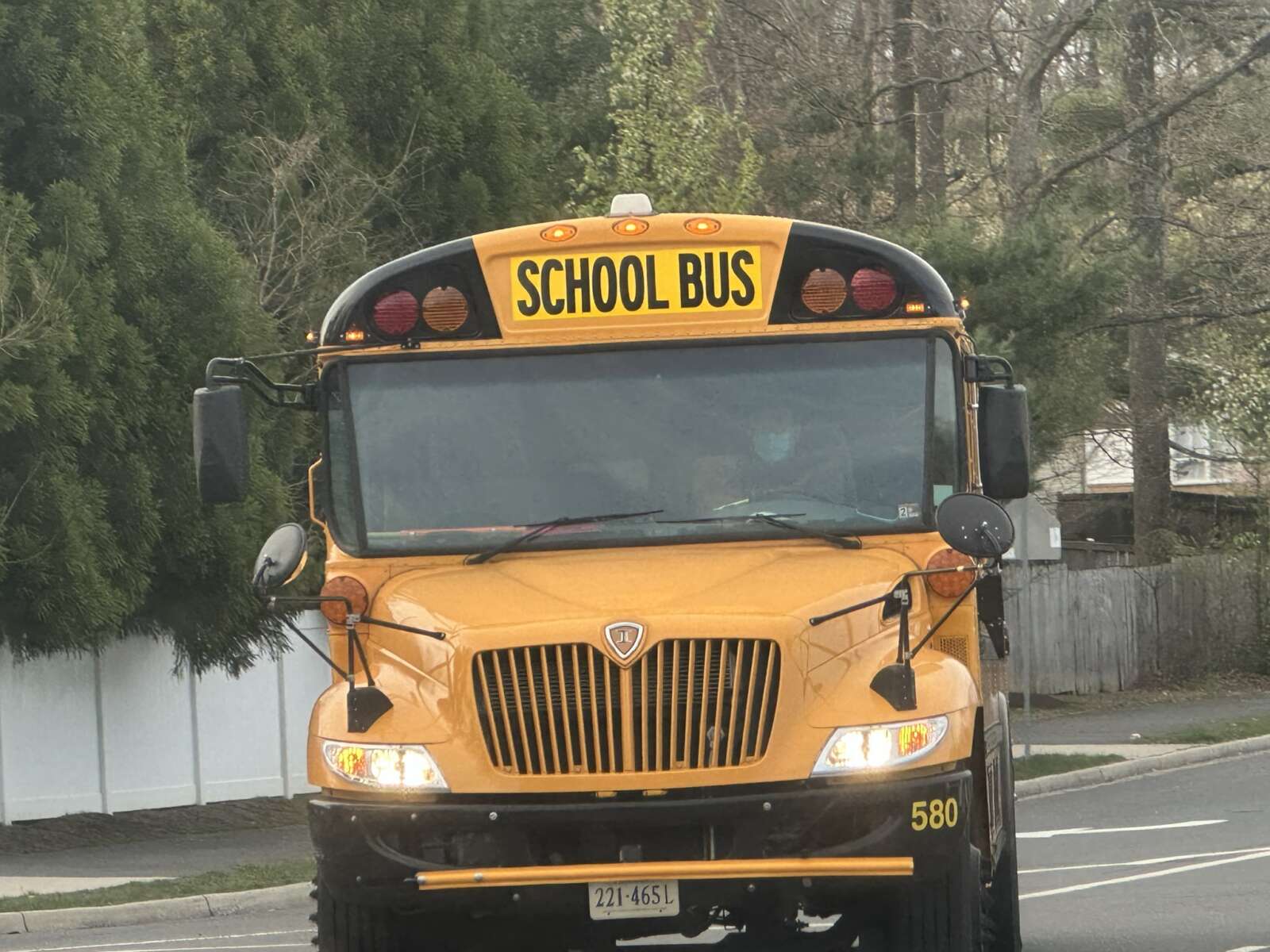
The Fairfax County School Board is moving ahead with its plan to change middle school start times.
According to Fairfax County Public Schools, research has shown that later start times could positively influence student academic performance and mental and emotional well-being.
Last September, the school system awarded consulting firm Prismatic Services a contract to develop a plan for changing middle school start times to 8 a.m. or later. The goal is to make these changes without changing high school start times or impacting the FCPS budget.
Currently, all middle schools start at 7:30 a.m. FCPS moved high school start times to around 8 a.m. in fall 2015 through its Blueprint for Change adoption. At the time, the then-superintendent said revisions to middle school start times would be considered at a later date.
At a meeting last Thursday (Feb. 22), the school board received an update on the plan from Prismatic Services President Dr. Tatia Prieto, who said the goal is to recommend start times to the board in January 2025 with the intent to implement changes by 2026, if the board adopts them.
“To get there, we have a number of milestone activities,” Prieto said. “The background report, which we’re currently engaged in, [covers] the history of efforts in Fairfax around this issue. We’re also developing a number of case studies with a few large school districts to look at lessons learned from their implementation.”
The firm will also conduct on-site observations at selected middle schools.
“This is going to include observing bus observations at selected middle schools in order to get a good feel for things,” Prieto said.
The plan also includes a total of eight public information sessions for the community — four in the spring and four in the fall.
“The spring ones are going to be more informational in nature,” Prieto said. “We’ll communicate about sleep research, and let participants discuss how later school start times could be beneficial and could be implemented. And then the fall ones will present two to four alternatives for input.”
Additionally, the firm will conduct online surveys and forums. One major concern in changing school start times is transportation constraints, which Prieto said would be covered in the information sessions.
“Analyzing the potential impact of moving middle school start times on both the number of drivers needed, and on all the special programs will be part of our work on this project,” Prieto added.
Mount Vernon District School Board Representative Mateo Dunne questioned how a possible time change would affect extracurricular activities like sports, particularly in the fall and winter when the sun goes down earlier.
Prieto pointed to Anne Arundel County Public Schools, which also hired Prismatic Services to help change its school start times.
“All of their middle schools start at 9:15. They shifted their sports program — which is much more extensive than what you currently have — to the after hours, and are not experiencing any problems,” she said.
Dunne also asked how a change in the start time would affect staff and teachers working at middle schools. Prieto said they propose surveying teachers to find out if they foresee any potential issues.
“I will add that we did develop, as one of the initial documents for this, a list of the key stakeholders we need to talk to,” she said.
Springfield District Representative Sandy Anderson requested more information on how later start times has affected attendance at other schools.
“I have an eighth grader. I can’t imagine having him have to get to school on his own at 9:40, so that is terrifying to me,” Anderson said.
Updated at 3:55 p.m. — Fairfax Connector service will stay suspended at least through this weekend (Feb. 24-25) as drivers and mechanics continue their strike, the Fairfax County Department of Transportation has announced.
FCDOT says it “expects negotiations to continue in good faith with the goal of completing a new contract very soon.”
Earlier: Stagnant wages. Eleven-hour work days with barely enough break time for a meal. Just seven days of sick leave, even after a pandemic that research suggests sickened and killed transit workers nationwide at an elevated rate.
Those are some of the challenges Fairfax Connector workers report facing under Transdev, the private company that Fairfax County hired in 2019 to operate its public bus system. In a bid for improved working conditions, more than 600 bus drivers and mechanics are now on their second day of a strike called yesterday (Thursday) by Amalgamated Transit Union (ATU) Local 689.
“You have to make a choice. When is enough, enough? When do you stand up and fight back? It was time to stand up and fight back,” Sharon Forsyth said while picketing outside the West Ox Road Bus Facility where she works as a Fairfax Connector driver. “What the outcome would be, who knows? But at least my voice was heard…Treat us right. Fair contract, fair wages, sick leave. Give us something more than a slice of pizza and a handshake after 35 years of service.”
A relative newcomer who joined the Connector just over a year ago, Forsyth has worked in transportation for 37 years — including a previous stint with Transdev. The starting salary for drivers is nearly the same as it was 20 years ago, which is “unacceptable,” she says.
“You can’t afford the housing in this region. You can barely afford food in this region,” said Forsyth, who commutes from Prince William County. “So, that is the purpose of this. Nobody wants to be here, but we’re all here, you know? If you don’t take care of the people that run your business, you’ll soon be what? Out of business.”
Forsyth was one of about 128 people who showed up yesterday to march, chant and display signs at the West Ox facility (4970 Alliance Drive), which employs about 163 Connector workers, according to ATU Local 689 organizer Troy Barnes. Workers began convening around 2 a.m., rotating in three shifts.
Across all three Connector garages, including ones in Herndon (268 Spring Street) and Lorton (8101 Cinder Bed Road), about 97% of the workers represented by the union were expected to join a picket line, Barnes told FFXnow.
Authorized by members on Dec. 29, the strike call came after Local 689 and Transdev spent 12 bargaining sessions between October and last Friday, Feb. 16 trying to hammer out a new labor contract that will determine pay, benefits and working conditions, according to the union. Before the strike, workers were operating under a four-year contract that was negotiated after a four-day strike in December 2019 and expired on Nov. 30, 2023.
Fairfax Connector service will remain suspended until the strike is resolved, leaving around 26,000 daily bus riders in limbo, the Fairfax County Department of Transportation has said.
UPDATE: All Fairfax Connector bus service remains suspended Friday, February 23. We are continuing to monitor contract talks between Connector’s operations contractor, Transdev, and the Amalgamated Transit Union (ATU) Local 689, which represents Connector drivers and mechanics.
— Fairfax Connector (@ffxconnector) February 23, 2024
As reported yesterday, Transdev called the union’s work stoppage disappointing in a statement that detailed some of its contract proposals, including a 19.5% wage increase over three years, coverage for 90% of health care expenses and 50% of dental and vision expenses, and yearly performance bonuses of up to $5,300.
However, Barnes says the contractor’s offers for sick leave, retirement benefits and guaranteed work hours remain inadequate. Read More
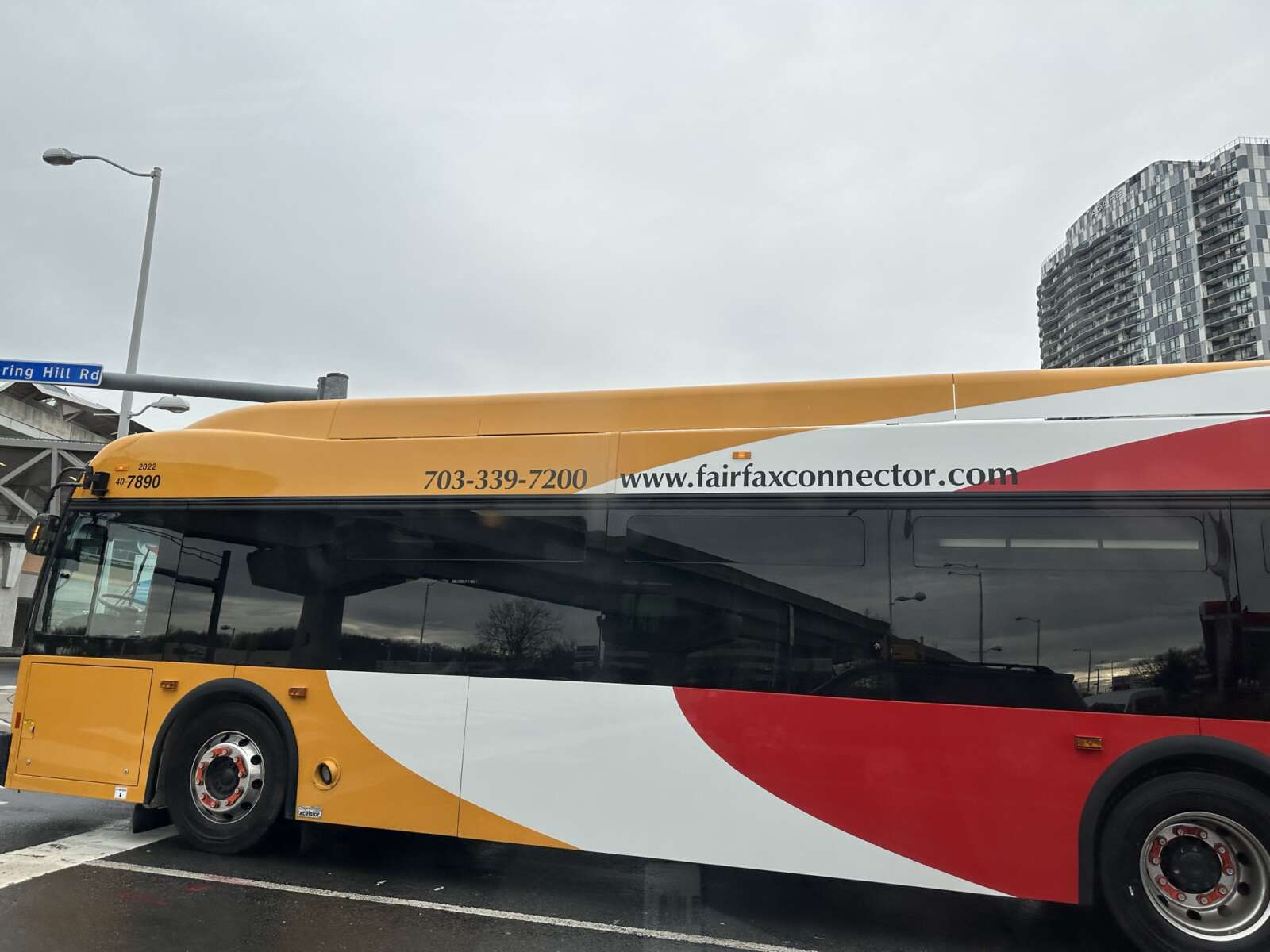
(Updated at 11:35 a.m.) Fairfax Connector workers have launched a strike after months of negotiations for a new labor contract with Transdev, the company that operates Fairfax County’s bus service.
Amalgamated Transit Union (ATU) Local 689, which represents about 638 bus operators and mechanics for Fairfax Connector, announced the strike just after midnight today (Thursday). Workers began hitting picket lines at garages in Herndon, Lorton and on West Ox Road in the Fairfax area at 2 a.m.
Due to the walk-off, Fairfax Connector has suspended service on 93 of its routes, starting at 9 a.m. The bus system serves approximately 26,000 passengers daily, according to its website.
“We encourage our users to please use alternative methods of travel. We apologize for any inconvenience,” the transit agency said.
The bus system can’t resume operations until the drivers and mechanics return to work, a Fairfax County Department of Transportation spokesperson confirmed.
🚨Due to a job action and work stoppage taken by the Amalgamated Transit Union (ATU) Local 689, Fairfax Connector Service will be suspended today at 9:00 AM. Please use alternative methods of travel. We apologize for any inconvenience. Check here for updates.
— Fairfax Connector (@ffxconnector) February 22, 2024
Members gave the union the authority to call a strike on Dec. 29, nearly a month after their existing contract with Transdev expired on Nov. 30.
In a news release, the union said there remains “a vast divide” between its demands and Transdev’s, and a strike became “unavoidable” after 12 bargaining sessions due to “Transdev’s unfair labor practices and regressive bargaining.” It also criticizes Fairfax County Board of Supervisors Chairman Jeff McKay for an alleged “refusal to weigh in.”
“The Union remains committed to bargaining in good faith to reach a tentative agreement on a new contract and intends to continue to meet with Transdev even while on strike,” Local 689 said in a statement. “Several key priorities in a new contract for Local 689 include true retirement security, more sick days, competitive wages for bus operators and mechanics with regional transit companies, and balanced labor-management rights.”
Transdev said in a statement that it’s “disappointed” the union initiated a strike despite what it describes as a “generous offer” that included $126,000 in annual pay and benefits for a majority of drivers and $128,000 annually in pay and benefits for 78% of mechanics represented by ATU.
“This unexpected action has had a severe impact on the community, particularly those who depend on the Fairfax Connector for their daily transportation needs,” the contractor said. “Transdev put forth a comprehensive proposal that includes significant wage increases, healthcare benefits, retirement savings, bonuses, guaranteed minimum hours, and additional perks tailored to employees of all experience levels.”
In a statement to FFXnow, McKay said it would’ve been “inappropriate” for him to interfere with the contract negotiations, since Fairfax County isn’t a directly involved party.
I have been in communication with the County Executive and his team throughout this process and was aware of the impasse. I was not, however, aware that a strike would occur which has left the almost 26,000 daily users of the Connector without the service they rely on. I fully support the ability of Connector drivers and mechanics to be treated, and compensated, fairly. The service they provide to our residents is high quality. I also support the ATU Local 689’s right to advocate on behalf of their members. My hope is that the union and Transdev can reach agreement on a contract that is in line with similar transit services in our neighboring jurisdictions and that respects the exemplary work of drivers and mechanics. Additionally, while transit service is essential, the cost is ultimately borne by our residents and must also be considered in these negotiations. Connector service needs to be sustainable not just now but in the future.
Connector workers last negotiated a contract in 2019. Then represented by ATU Local 1764, they went on strike for four days that December before signing an agreement to resume work on Dec. 8. A new, four-year contract was ratified on Feb. 29, 2020, averting a potential second strike.
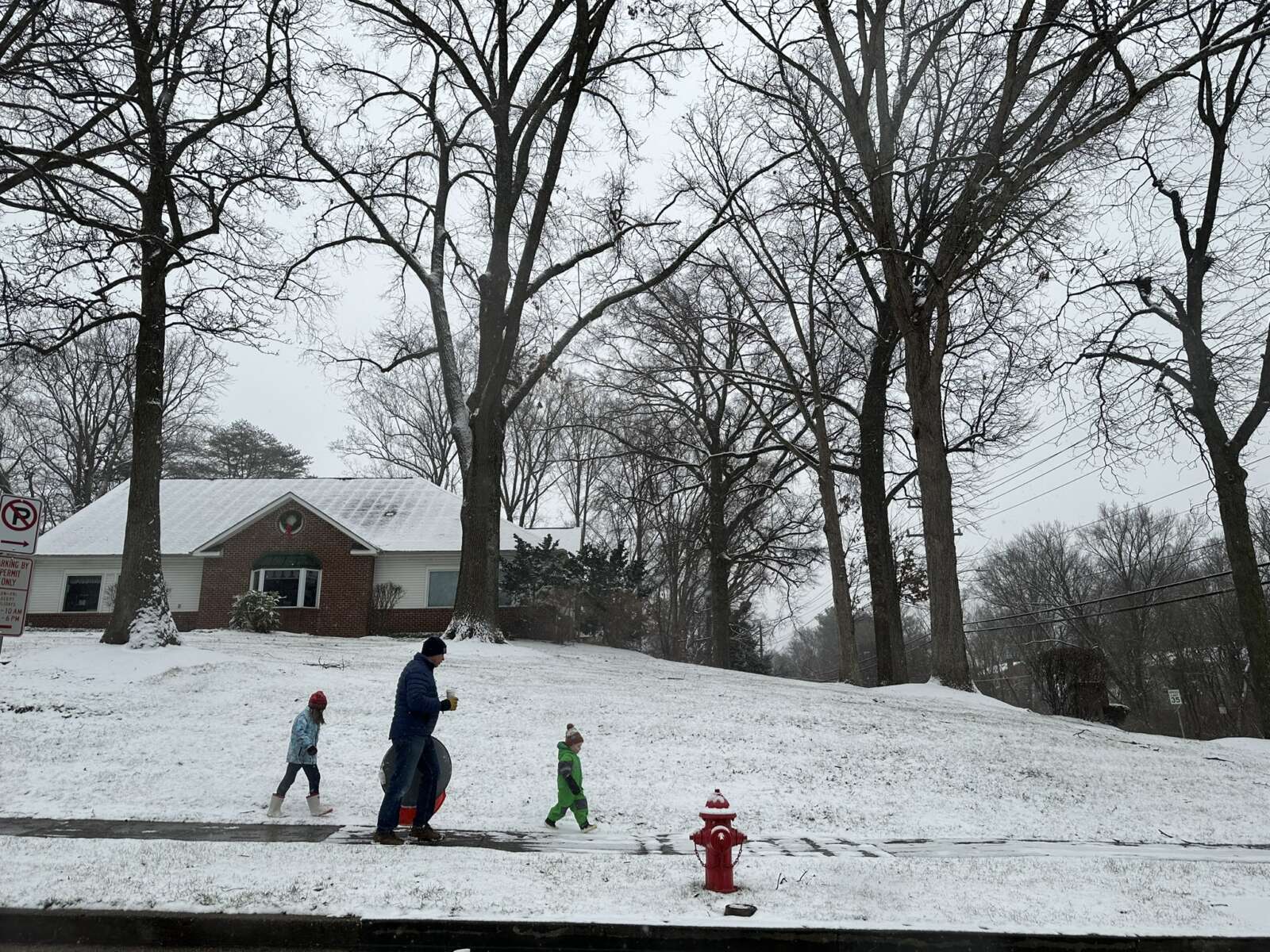
Fairfax County Public Schools is using up its first snow day of the year, canceling all classes and other activities on school grounds tomorrow (Tuesday) as flurries continue to blanket the D.C. area.
Affected activities include extracurricular programs, sports practices, field trips, outside recreation classes, adult education classes and the School Age Child Care (SACC) centers.
FCPS has 11 snow days built into its calendar, and unlike in the past couple of years, students don’t need to fear a shift to virtual classes after the first five days.
A Winter Weather Advisory is currently in effect for the county through 7 a.m. tomorrow. The National Weather Service projects that this storm could result in two to three inches of snow accumulation, along with possible freezing rain and drizzle, according to the Fairfax County Department of Emergency Management.
“Snow intensity will increase this evening before tapering off overnight,” the NWS said, warning that the “hazardous” road conditions could still affect tomorrow’s morning commute.
In anticipation of the roadways becoming a challenge, Fairfax Connector will reduce service starting at 8 p.m. today (Monday). The bus system will continue running several routes on a holiday weekday service, but some will end at or around 8 p.m.
🚨Fairfax Connector will operate reduced service tonight beginning at 8 p.m (1/15) and will operate Saturday service tomorrow (1/16). Our call center is also open 5AM-10PM, M-F. Stay safe! More details: https://t.co/z6kTBDOUeK pic.twitter.com/0VUqOCluVD
— Fairfax Connector (@ffxconnector) January 15, 2024
Tomorrow, the Connector will implement a Saturday service schedule. A list of the specific routes that will be provided can be found on the Fairfax County Department of Transportation’s website, and minute-by-minute status updates will be available through BusTracker.
The George Washington Memorial Parkway has been temporarily closed in the McLean area. Due to ongoing construction, the National Park Service previously announced that the section from I-495 to Spout Run in Arlington would close if two or more inches of snow are forecast.
Here’s the full message from the NPS:
The George Washington Memorial Parkway, from 495 to Spout Run, is closed due to the forecasted severe winter weather in the area. This closure is necessary to ensure the proper treatment of the roadway and to restore the parkway to safe travel conditions. Crews will work diligently to treat the road for safe passage of drivers. Drivers should anticipate delays in reopening the northern section of the parkway as crews are required to use smaller equipment than usual to accommodate the lane widths and configurations. Please plan to use alternate routes.
A follow-up alert will be distributed once the parkway has reopened. Thank you in advance for your patience.
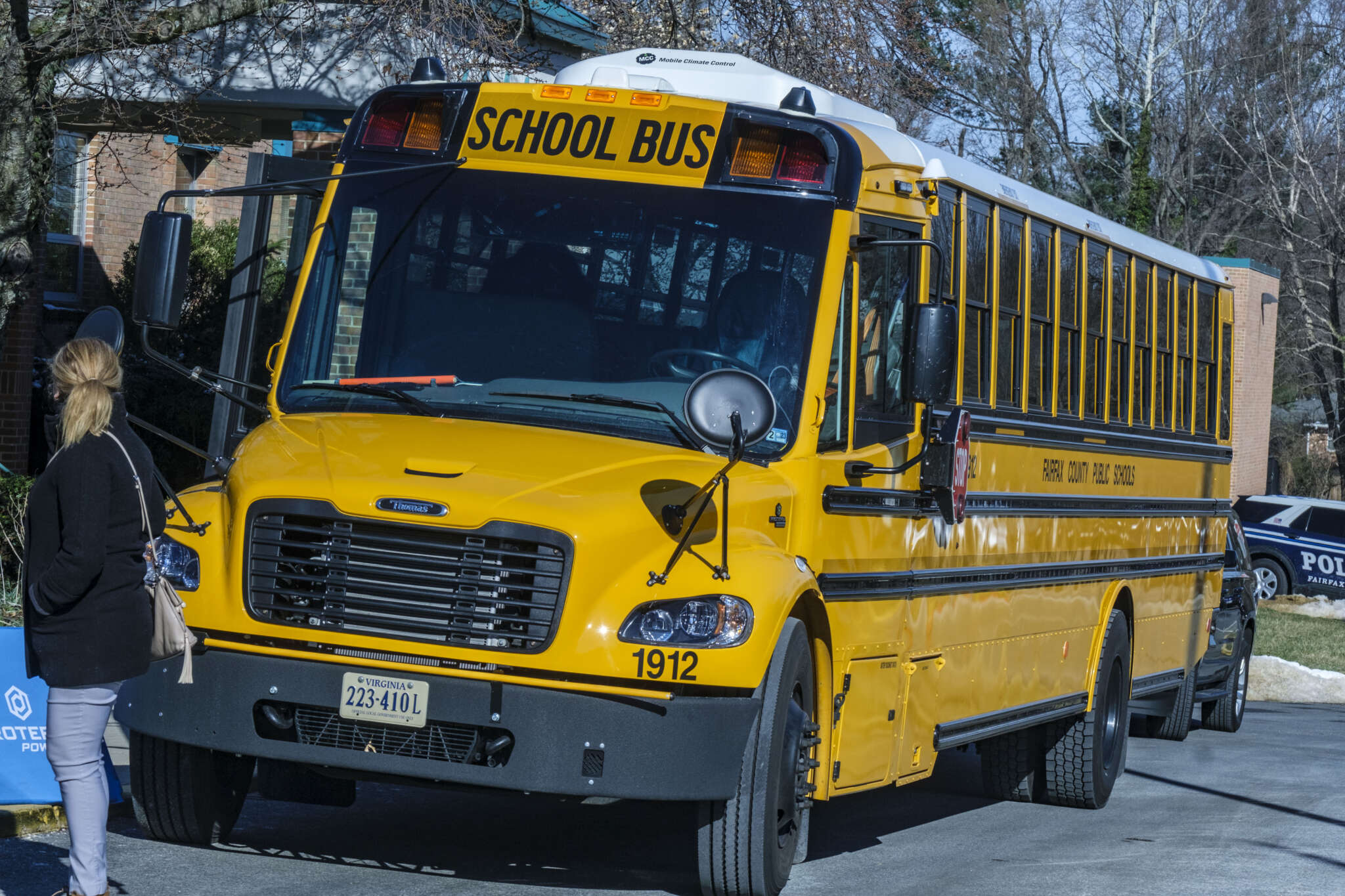
Fairfax County Public Schools will more than double the number of electric buses in its fleet, thanks to a new federal grant.
The local school system has been awarded $16.59 million as a winner of the U.S. Environmental Protection Agency’s inaugural Clean School Bus program grants competition. The other winner announced yesterday (Monday) was also from Virginia: Newport News Public Schools will receive $525,000.
The funds will enable FCPS to purchase 42 electric school buses. According to its website, the district currently has eight electric buses in a fleet with 1,625 buses, but it was slated to add another 10 in 2022. FCPS didn’t respond by press time when asked to confirm whether those buses are now operating.
“We are honored and excited to be among the recipients of the Environmental Protection Agency’s Clean School Bus Awards,” FCPS Superintendent Dr. Michelle Reid said in a statement. “This recognition not only underscores our commitment to sustainability and environmental stewardship but also reflects our ongoing efforts to provide healthier, cleaner transportation for all Fairfax County Public Schools students.”
FCPS has pledged to provide entirely carbon-neutral student transportation by 2035. The first electric school bus arrived in January 2021 as part of a statewide initiative led by Dominion Energy, which had proposed replacing all diesel school buses in Virginia by 2030.
However, the Virginia House of Delegates voted against expanding Dominion Energy’s program that spring, instead creating a grant fund that never got funding.
After getting eight electric buses from Dominion in 2021, FCPS received a state grant for 10 buses out of a settlement agreement with Volkswagen, which had been sued in 2016 for cheating on vehicle emissions tests.
The new federal grant funds come from the Bipartisan Infrastructure Law signed by President Joe Biden in 2021, allocating $5 billion to create the Clean School Bus program, which is dedicated to replacing existing school buses with “zero-emission and low-emission models.”
While FCPS intends to buy electric buses, Newport News requested funding to add propane-fueled buses, a switch it said will reduce emissions and lower fuel and maintenance costs.
Rep. Gerry Connolly called the grant “a game-changer” for FCPS.
“The environmental benefits of these new buses are vitally important to our fight against climate change, but the good news doesn’t stop there,” Connolly said. “Students, staff, and parents who spend time on and around school buses will no longer be exposed to diesel exhaust and other toxins from diesel-powered buses.”
This is a gamechanger for Fairfax County. Clean school buses will bolster our fight against climate change and protect the health of students, staff, and parents.⁰
This win comes thanks to the #BipartisanInfrastructureLaw signed by President Biden.⁰https://t.co/mcAKAvZZoH https://t.co/an33Aarx5K— Rep. Gerry Connolly (@GerryConnolly) January 8, 2024
Outside of the school system, the Fairfax County government adopted an operational energy strategy in 2021 whose targets included converting all of its buses and fleet vehicles to electricity or another non-carbon-emitting fuel by 2035.
Fairfax Connector, the county’s public bus system, welcomed its first electric buses in September, and the Department of Public Works and Environmental Services added an electric trash truck in August.
Late last year, the county launched a Climate Action Dashboard to keep track of its progress on various efforts to combat climate change. The transportation portion of the dashboard indicates that the county government has acquired 224 hybrid and 50 fully electric vehicles, putting it just 1.5% of the way to its goal of completely transitioning in just over a decade.
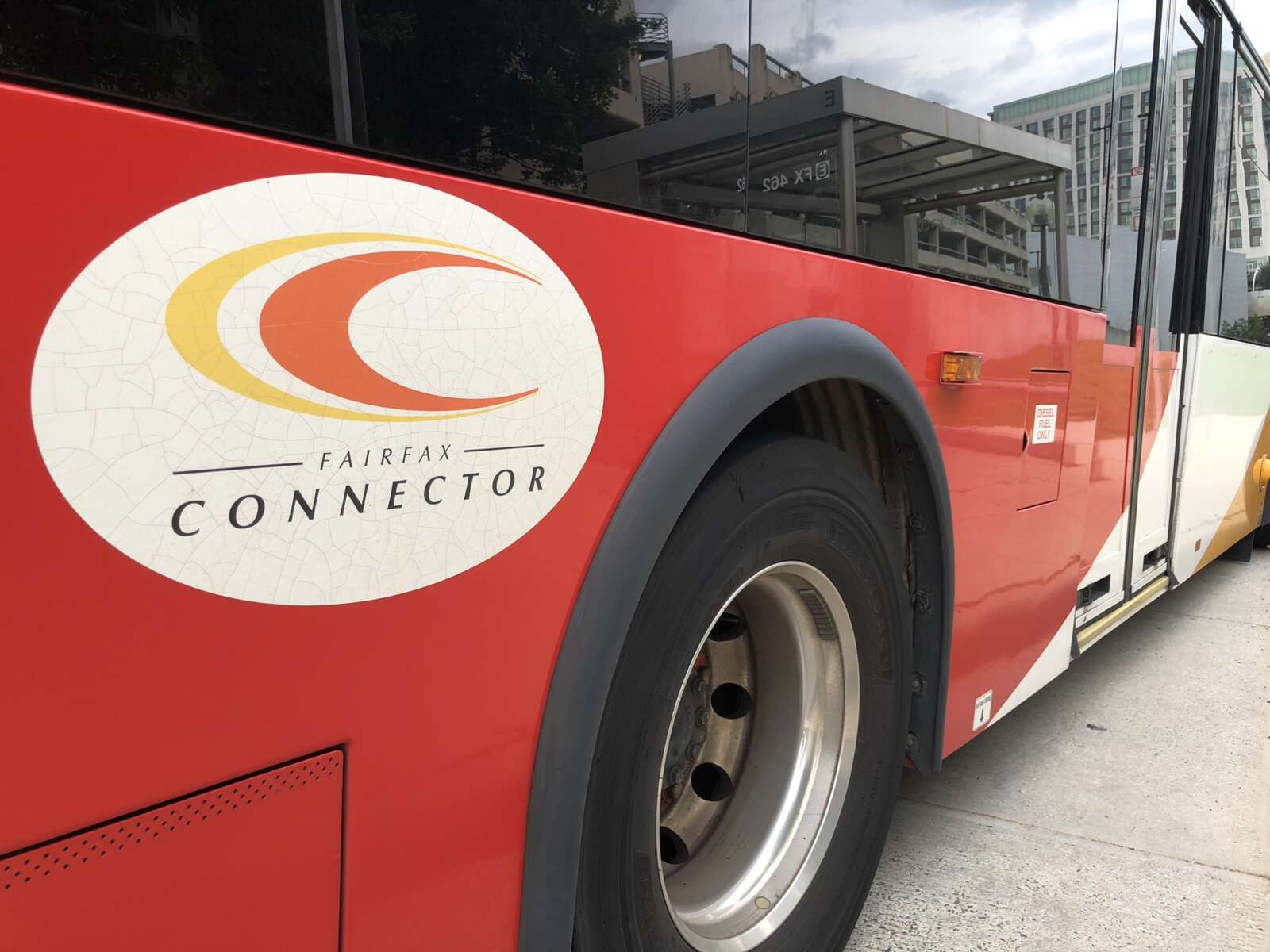
(Updated at 4 p.m.) Hundreds of Fairfax Connector workers could strike if contract talks between their union and employer break down.
Nearly a month after the end of their existing contract with Transdev, which operates Fairfax County’s public bus system, union drivers, mechanics and other employees voted on Dec. 29 to authorize a strike, the Amalgamated Transit Union (ATU) Local 689 announced yesterday.
As a policy, the union didn’t disclose how many of the approximately 546 Fairfax Connector workers it represents participated in the vote, but 99% of those who did voted in support of authorization, a Local 689 spokesperson told FFXnow.
Despite the recent authorization vote, a strike call doesn’t appear to be imminent, as the union says it has another bargaining session scheduled for Jan. 19.
“For the past three months, Transdev has proven time and time again that they are more interested in hoarding their money than making necessary investments to improve their dedicated and hardworking employees’ wellbeing,” Local 689 President Raymond Jackson said in a statement. “Our members are fed up with Transdev’s flat out refusal to fully engage in meaningful bargaining over key economic issues and attempts to distort facts.”
The workers who support Northern Virginia’s largest public bus system have been negotiating a new labor contract since October, when Local 689 delivered its first proposal to Transdev. The union has said its priorities include pay increases, better sick leave, standard work schedules and retirement security.
Shortly before the existing contract expired on Nov. 30, the union reported progress on some issues, but it said Transdev’s proposed wages still fell short of what workers are seeking.
Now, the union says Transdev “finally presented a decent wage increase proposal,” but the company is pushing the union to drop its demands for “improved dental care and sick leave, retirement security, and more stable working hours.”
(Correction: This article initially said that, according to the union, Transdev had threatened to withdraw its offer of improved sick leave and other benefits in exchange for the wage increases. A union spokesperson clarified that those benefits weren’t offered. Instead, the proposed pay plan was “contingent” on the union dropping its other demands.)
Transdev, which was first hired by the county to operate Fairfax Connector in 2019, says it’s continuing “to bargain in good faith” with ATU Local 689.
“To date, we’ve agreed to over 50 modifications to the prior [collective bargaining agreement] and proposed significant improvements to wages & benefits,” Transdev said in an emailed statement. “We value our partnership with the ATU and remain hopeful that we can come to a mutually-agreeable resolution quickly.”
However, Local 689 claims that many of the contractor’s concessions are either “technical corrections or the bare minimum necessary changes to keep somewhat competitive with other transit entities in the region.”
“A vast divide between the two sides still remains,” the union said.
Serving approximately 26,000 passengers a day on 93 routes, Fairfax Connector is currently operating under the expired contract, which was ratified in early 2020 after workers went on a four-day strike in December 2019 and raised the possibility of a second walkout.
The county’s plan for handling a strike, if the current contract dispute isn’t resolved, aren’t yet clear. The Fairfax County Department of Transportation told FFXnow it “has no comments about a potential strike at the moment.”

